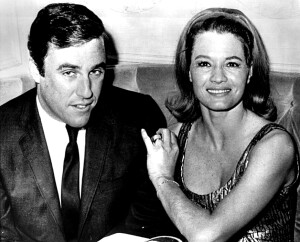On March 7 two years ago, my heart stopped. My son was there to start it again. He saved my life, and significantly, he saved my brain. I know from my father’s experience that cardiac arrest and resuscitation can go the other way. He lived his final year in a coma.
I’ve told both stories in fits and starts. When I can sustain a family narrative with the sweep of War and Peace, maybe I’ll tell the whole story. I’ll try.
To mark the day today, two years later, let me reprise another poem written after I came home from the hospital. And I’ll frame it with several decisions that surround it. All of them involve the Appalachian Trail.
Brendan came back to Yellow Springs after quitting a high-pressure construction management job that took him around the country building nursing homes. He wanted something different, very different. He wanted a wilderness trip months and miles longer than any he had taken before. He imagined hiking a 3,000-mile trail in New Zealand, but the border was closed. Then he set his sights on the AT and began training hikes in Clifton Gorge.
On that morning two years ago Brendan was headed to Harper’s Ferry for a longer AT shakedown hike. After steering me in and out of two hospitals in three days, he needed a break. My situation seemed stable enough. Then it wasn’t.
I called him from my bedroom as he was leaving town. He got to the house just as I started to check out. He took over from there.
Next came an eight-hour gap in what I remember. What I know comes from his knowledge of it, giving me details gradually as my mind could absorb them. A watershed moment came a month later when we were back in my bedroom. He was stretching on the rug after one of his training hikes when he began to tell the story in situ.
“After the cop arrived, we moved you from the bed to the floor so we could work on you better. You were stretched out right here, like this.” Brendan extended his arms as if making a snow angel. “When the squad got here, they shocked you. It was gnarly.”
I’ve spent a long time imagining “gnarly”. I look around the calm bedroom where I do much of my reading and writing and try to unpack the scene. My son is there with a Yellow Springs cop, three paramedics, a defibrillator and LUCAS device – all of them working expeditiously so they could get me down the stairs alive for another trip to the hospital.
A week after Brendan told me this version of the story, he left to hike the Appalachian Trail. Even if I felt a little nervous to be on my own again, I wanted him to do it. All of it. He deserved it. It deserved him.
Heart of Oak
There is a certain symmetry
in an old oak bed, this one
where you were conceived,
where I died and you started
my heart again with carpenter hands
as hard and rough
as freshly ripped planks.
Long after the tree falls
there is a certain tensed promise
held in the heart of an oak
and you, son, fulfill it.
About the Image: Brendan (far left) celebrates with his Appalachian Trail family on the summit of Mt. Katahdin, the AT’s northern terminus in Maine. I stood on the same summit in 1972 when I was 16 years old. I dreamed of hiking the whole trail, but never made it. I’m grateful Brendan did.
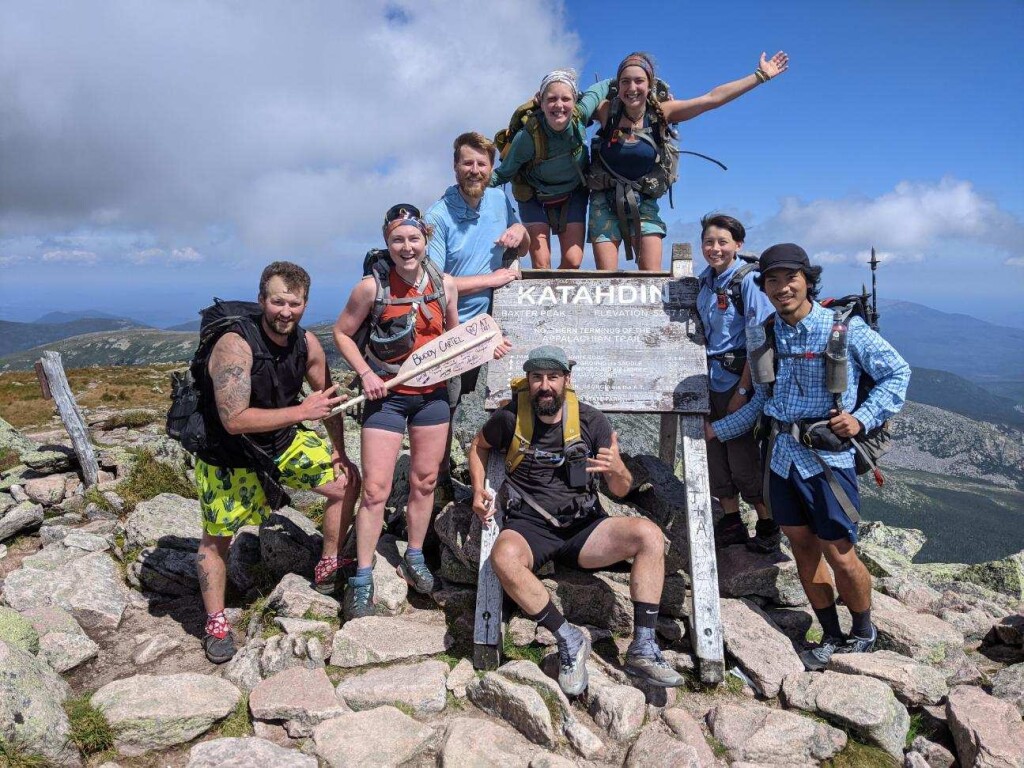
![Sandhill cranes land on Platte River sandbar roosts west of Rowe Sanctuary’s Iain Nicolson Audubon Center southwest of Gibbon, Nebraska. [Photo by Lori Porter| Kearney Hub]](https://www.ghostturtles.com/wp-content/uploads/2015/03/sandhill_cranes_kearneyhub_032015-300x225.jpg)
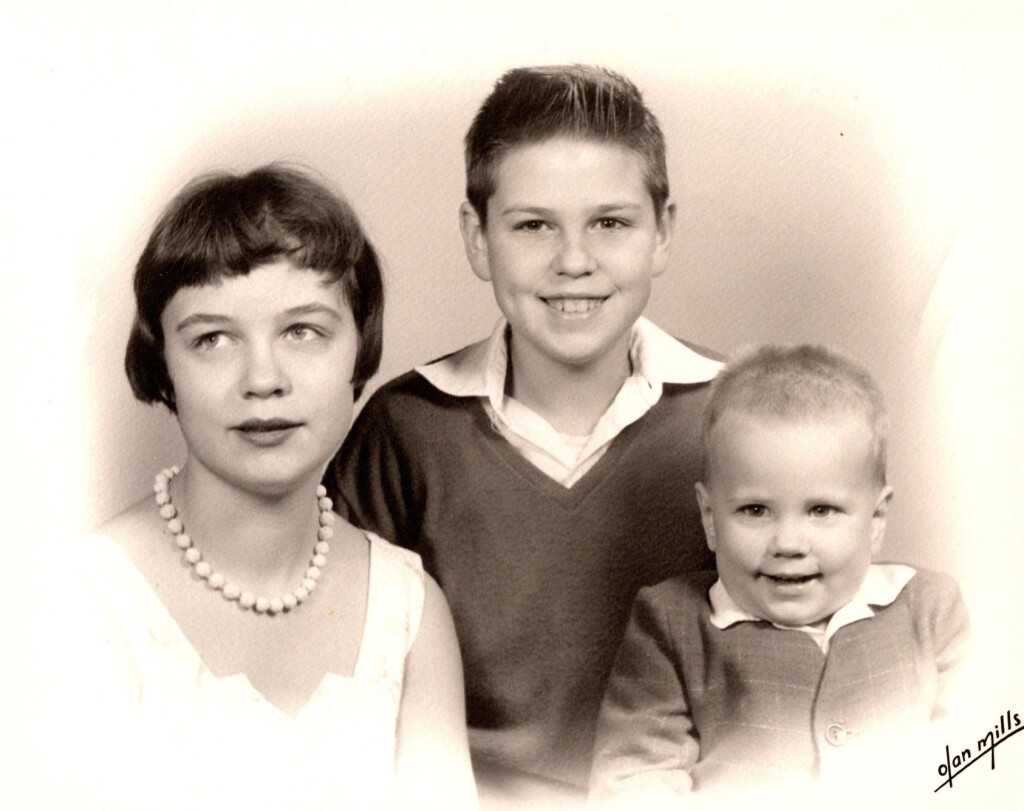
![The famous image of actress Raquel welch wearing a provocative fur bikini graced the poster for the 1967 film “One Million Years B.C.” The UK theatrical release poster was created by Tom Chantrell. [Source: Wikipedia]](https://www.ghostturtles.com/wp-content/uploads/2023/03/Raquel-Welch-Original_1966_UK_One_Million_Years_B.C._poster-Wikipedia-300x222.jpeg)
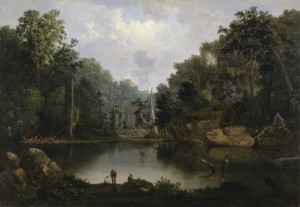

![An endangered Whooping crane takes flight. Yhe large bird has a 7-foot wingspan. It is all white except for black wing tips and face markings. In this photo its long neck stretches forward; its wings sweep upward; and its black legs trail straight behind it. [Source: International Crane Foundation]](https://www.ghostturtles.com/wp-content/uploads/2023/03/Whooping-crane-eastern-ICF-080622-300x157.jpg)
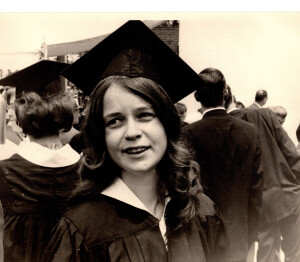
![Mark Willis peruses a 1745 volume by Voltaire at a bouquiniste book stall on the banks of the Seine in Paris. He wears a brown leather jacket and checkered flat cap. He holds the open book in his hands. Rows of old books are seen on shelves behind him. [2005 photo by Ms. Modigliani]](https://www.ghostturtles.com/wp-content/uploads/2023/03/mw_bouquiniste_05-300x225.jpg)

